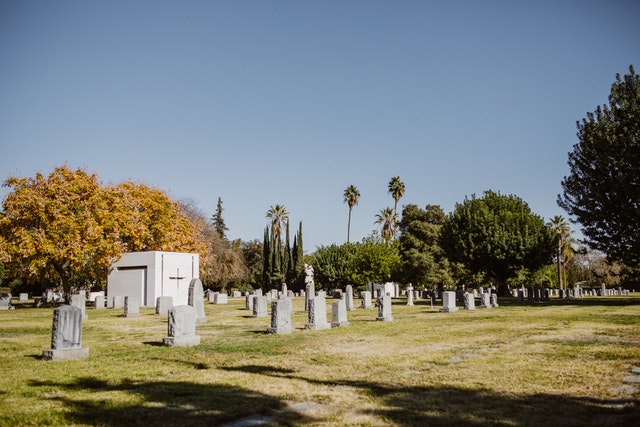
A Breakdown of the Different Types of Cemeteries
January 2, 2023
Why You Should Watch Where You Walk in Cemeteries
January 16, 2023If you were to walk around and ask 100 people the question, “How deep are the graves in cemeteries?”, a large percentage of them would probably respond by saying, “Six feet.” The term “six feet deep” has been used so often over the years that most people assume that this is how deep graves are in cemeteries in Hamilton Township, NJ. This was the case once upon a time, but these days, most caskets are only buried about four feet deep. Find out why below.
Burying caskets four feet deep prevents sinkholes.
If you dig a grave too deep and put a casket into it, there is an increased risk of a sinkhole forming on top of it. A Hamilton Township, NJ cemetery will go to great lengths to stop a sinkhole from forming by using a burial vault for a casket. But even still, a sinkhole might still appear if a grave goes too deep. It’s one of the many reasons why cemeteries have stopped burying caskets six feet deep and reduced them to four feet deep.
It also stops flooding from taking a toll on caskets.
While you don’t want to bury a casket too deep because you’ll run the risk of a sinkhole developing, you also don’t want to bury it shallow and allow a flood to come through and dig up a bunch of caskets. It’s why burying a casket four feet deep makes more sense than burying it, say, two feet deep. If you don’t get a casket deep enough into the ground, it could come up to the surface at some point if it ever rains very hard and floods a cemetery. Given time to consider it, you’ll quickly realize that pre-planning is all about ensuring that your wishes are known, so they can be acted upon when the time comes.
It makes it easier to bury caskets quickly.
 Most cemeteries will make it a point to get a casket into the ground as quickly as they can following a person’s funeral services. But it can obviously be challenging to do this when they have to dig a six-foot hole as opposed to a four-foot one. By only burying caskets four feet in the ground, cemeteries are able to dig holes for them and then fill these holes in fast. It makes the entire burial process go smoother than it would otherwise.
Most cemeteries will make it a point to get a casket into the ground as quickly as they can following a person’s funeral services. But it can obviously be challenging to do this when they have to dig a six-foot hole as opposed to a four-foot one. By only burying caskets four feet in the ground, cemeteries are able to dig holes for them and then fill these holes in fast. It makes the entire burial process go smoother than it would otherwise.
It can be deeper than four feet in a few cases.
Although the average cemetery is only going to dig graves that are four feet deep, there are some instances in which they’ll choose to make them a little deeper. If, for instance, a family requests that two or more caskets be stacked on top of one another, it’ll mean that a cemetery will need to dig deeper than four or even six feet. These burial plots might need to be anywhere from seven feet to 12 feet to accommodate more than one casket in them. It’s one of the exceptions to the four-foot rule that has been employed by so many cemeteries.
Do you have more questions about how we prepare graves in our Hamilton Township, NJ memorial park cemetery? We would love to answer them for you. Contact us today to get your questions answered by an expert in this space.




